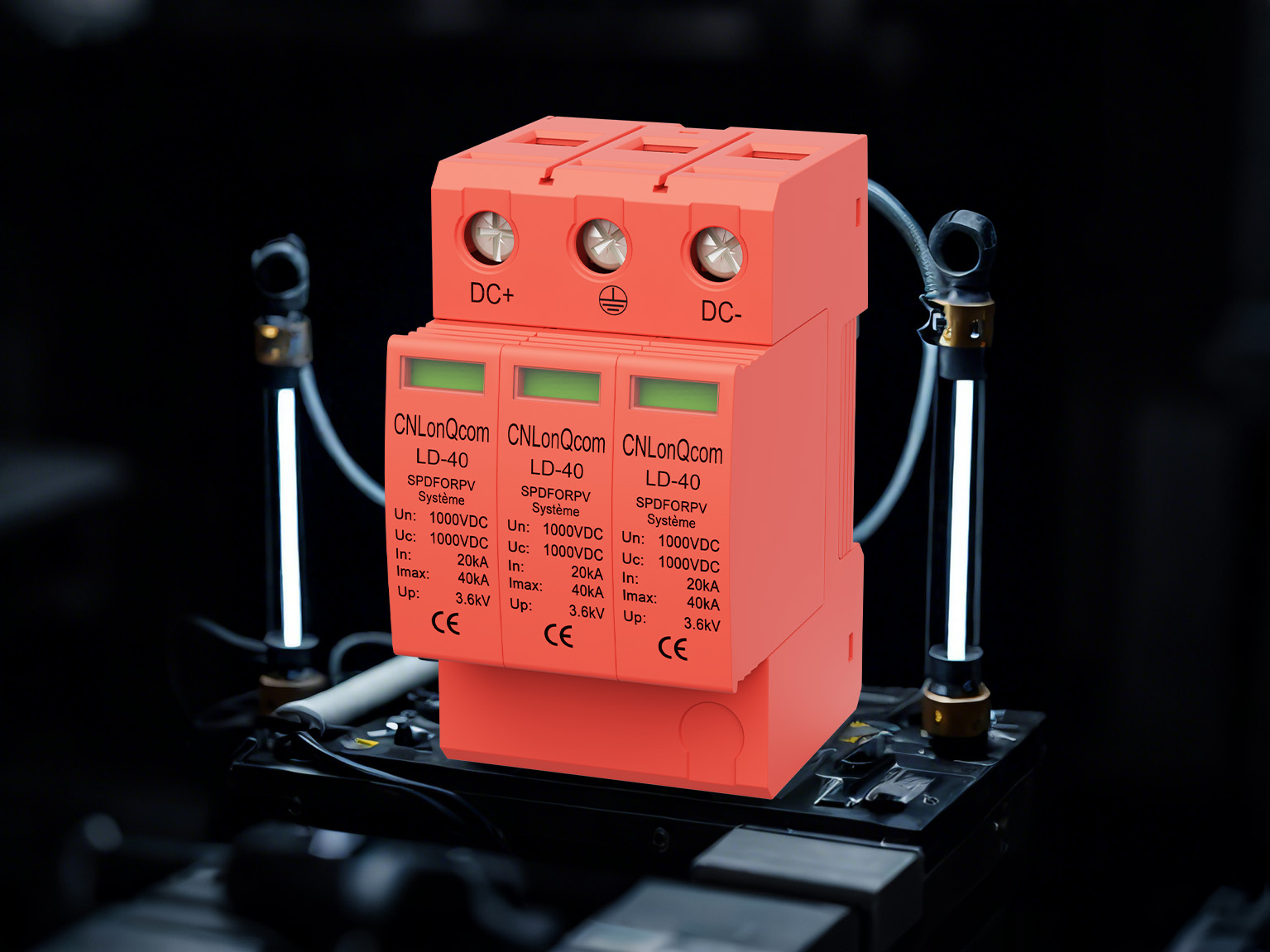Surge Protection: The Critical Line of Defense for Electrical Safety
2025-03-31
Introduction
In modern electrical systems, surge protection has become an indispensable safety measure. Whether in residential power supply, industrial production, or photovoltaic power generation systems, instantaneous voltage fluctuations can lead to severe consequences. This article systematically introduces the principles, applications, and selection criteria of surge protection to help readers gain a comprehensive understanding of this vital electrical safety technology.
1. Why Do We Need Surge Protection?
1.1 Hazards of Surges
A surge (or electrical surge) refers to a sudden and severe fluctuation in voltage or current, typically lasting from microseconds to milliseconds, with voltages potentially reaching thousands of volts. These transient overvoltages primarily originate from:
Lightning strikes: Direct or induced lightning
Grid fluctuations: Power system switching, short-circuit faults
Equipment operations: Startups/shutdowns of large motors, transformer switching
1.2 Potential Risks
Unprotected electrical systems face multiple risks:
Equipment damage: Breakdown of electronic components, insulation failure
Data loss: Server and storage device failures
Production interruptions: Industrial control system failures
Fire hazards: Overvoltage-induced arcs and short circuits
1.3 Economic Losses
Statistics indicate that approximately 30% of electrical equipment damage cases are surge-related, resulting in annual economic losses amounting to billions of dollars. Proper surge protection can significantly mitigate these risks.
2. Where Should Surge Protection Be Installed?
2.1 Key Protection Locations
A robust surge protection strategy employs a tiered approach:
Primary Protection (Type 1)
Location: Main distribution panel inlet
Function: Protects against direct lightning strikes and major surges
Typical parameters: Imax ≥ 50kA
Secondary Protection (Type 2)
Location: Sub-distribution panels
Function: Limits residual voltage and provides supplementary protection
Typical parameters: Imax ≥ 20kA
Tertiary Protection (Type 3)
Location: Device front-end
Function: Delivers precision protection for sensitive equipment
Typical parameters: Imax ≥ 5kA
2.2 Special Applications
Photovoltaic systems: Required on both DC (modules to inverter) and AC (inverter to grid) sides
Data centers: Server racks, network equipment front-ends
Industrial controls: Critical equipment such as PLCs and frequency converters
3. What Is a Surge Protective Device (SPD)?
3.1 Basic Concept
A Surge Protective Device (SPD) is an electrical safety device designed to limit transient overvoltages and divert surge currents. Key technical specifications include:
Maximum continuous operating voltage (Uc)
Nominal discharge current (In)
Maximum discharge current (Imax)
Voltage protection level (Up)
3.2 Main Types
Type Protection Target Typical Application Response Time
Type 1 Direct lightning Building inlets ≤100ns
Type 2 Induced lightning Sub-distribution panels ≤25ns
Type 3 Residual surges Device terminals ≤1ns
3.3 Additional Features
Modern SPDs often include:
Failure indicators (mechanical or electronic)
Remote monitoring interfaces
Thermal disconnect protection
4. How Does Surge Protection Work?
4.1 Basic Operating Principle
SPDs protect systems through the following mechanisms:
Monitoring state: Maintains high impedance during normal operation
Triggered conduction: Rapidly switches to low impedance upon detecting overvoltage
Energy diversion: Channels surge current to the grounding system
Recovery: Automatically returns to high-impedance state after the surge
4.2 Core Technical Components
Metal Oxide Varistor (MOV)
Material: Zinc oxide-based semiconductor
Characteristics: Voltage-sensitive nonlinear resistor
Advantages: Fast response, high current-handling capacity
Gas Discharge Tube (GDT)
Structure: Sealed gas-filled chamber
Characteristics: High insulation, strong diversion capability
Application: High-energy primary protection
Transient Voltage Suppression Diode (TVS)
Features: Ultra-fast response (picosecond-level)
Application: Precision electronics protection
4.3 Multi-Level Coordinated Protection
A typical three-tier protection system:
Primary protection: Diverts most energy (GDT)
Secondary protection: Further limits residual voltage (MOV)
Tertiary protection: Precision protection (TVS)
5. Selection and Maintenance Guidelines
5.1 Selection Criteria
System compatibility:
Voltage rating (Uc ≥ 1.15 × system voltage)
Current capacity (In ≥ expected surge current)
Performance parameters:
Voltage protection level (lower is better)
Response time (faster is better)
Certification standards:
IEC 61643
UL 1449
5.2 Installation Notes
Minimize connection wire length
Ensure reliable grounding (ground resistance ≤10Ω)
Avoid mixing different SPD types
5.3 Maintenance Recommendations
Regular inspections (at least annually)
Monitor failure indicators
Document status after lightning events
Conclusion
Surge protection is a critical component of electrical safety systems. By understanding its principles, selecting the right devices, and ensuring proper installation, electrical hazards can be effectively prevented, safeguarding both personnel and equipment. With technological advancements, surge protective devices are evolving toward smarter and more reliable solutions. At CNLonQcom, we are committed to continuous technological improvement, developing more advanced and comprehensive surge protectors to provide superior protection for all types of electrical systems.


